Tom's Guide Verdict
The Roborock S5 combines vacuuming, mopping and zone cleaning, but it’s not particularly successful at any of those tasks.
Pros
- +
Attractive design
- +
Excellent navigation
- +
Uses language to explain what’s happening
- +
Fast cleaner
Cons
- -
App is unintuitive
- -
Mopping feature more of a novelty
- -
Vacuuming performance is subpar
Why you can trust Tom's Guide
Want to differentiate yourself in a quickly growing consumer space like robot vacuum cleaners? The ambitious Roborock S5 includes a mopping function and zone cleaning for a reasonable $546. But while it aspires to be the Bo Jackson of robot vacuums, it performs more like Tim Tebow; although it doesn’t mop, the Shark Ion R85 offers more thorough cleaning performance, a better user experience, and it’s nearly half the price of the S5.
Design
If you’re adding a robot vacuum to your home, you want it to look good—especially if it’s docked in your living room. The Roborock S5 eschews the black-and-grey color scheme embraced by other vacuums for white, with muted silver trim around the rim.
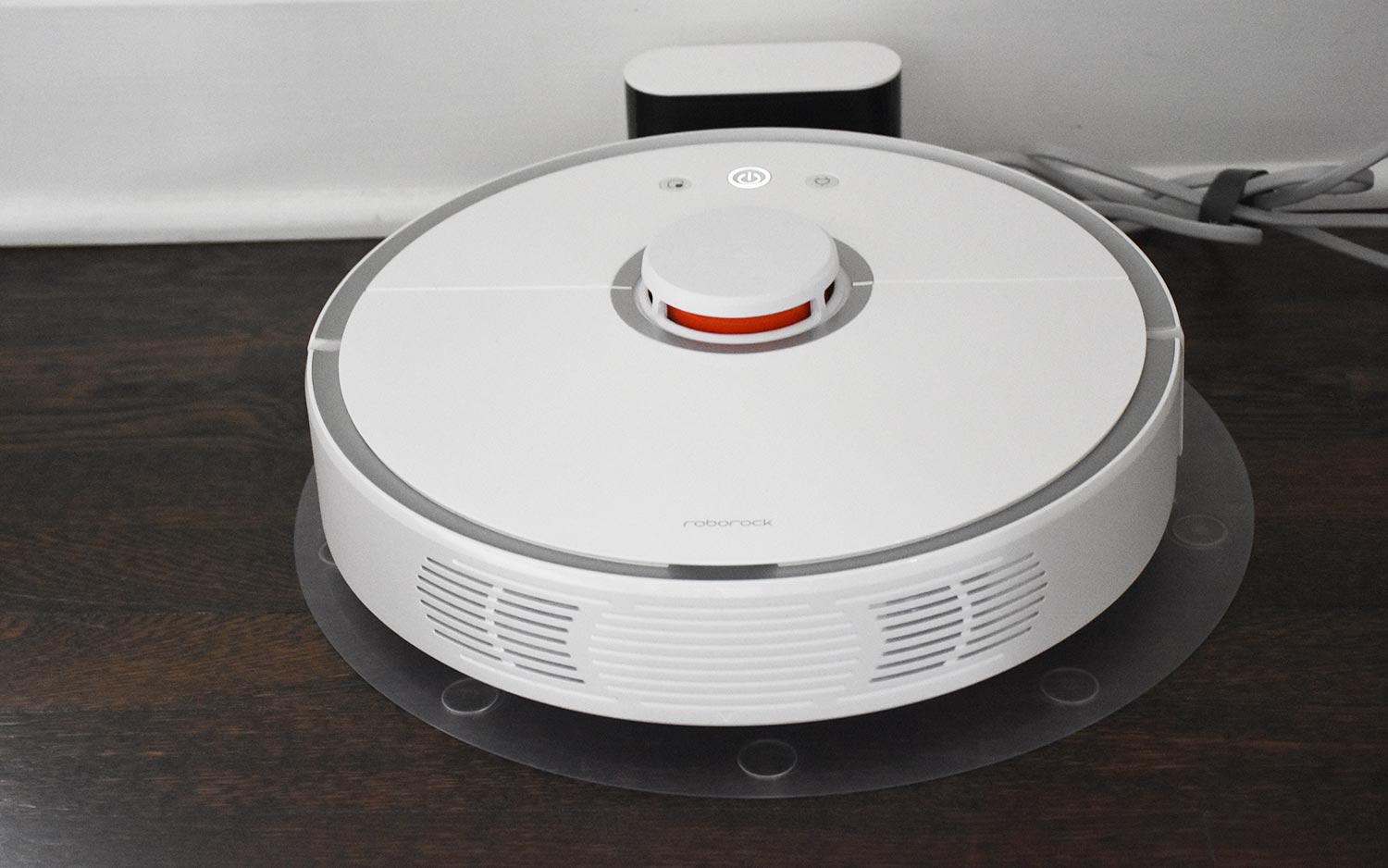
At the center of the robot is a raised laser cover with a splash of orange underneath, similar to the one on the Neato Botvac D7. Above the cover are physical buttons for spot cleaning, on/off and recharging. Perhaps due to its white color, the wall sensors on the front and side of the S5 are more noticeable than on other models, but they don’t detract from the bot’s understated look.
The Roborock S5 measures 13.8 inches in diameter, more than an inch larger than the Shark Ion R85; it’s also bigger than the 13-inch iRobot Roomba 690 and the 13.2-inch Neato Botvac D7.
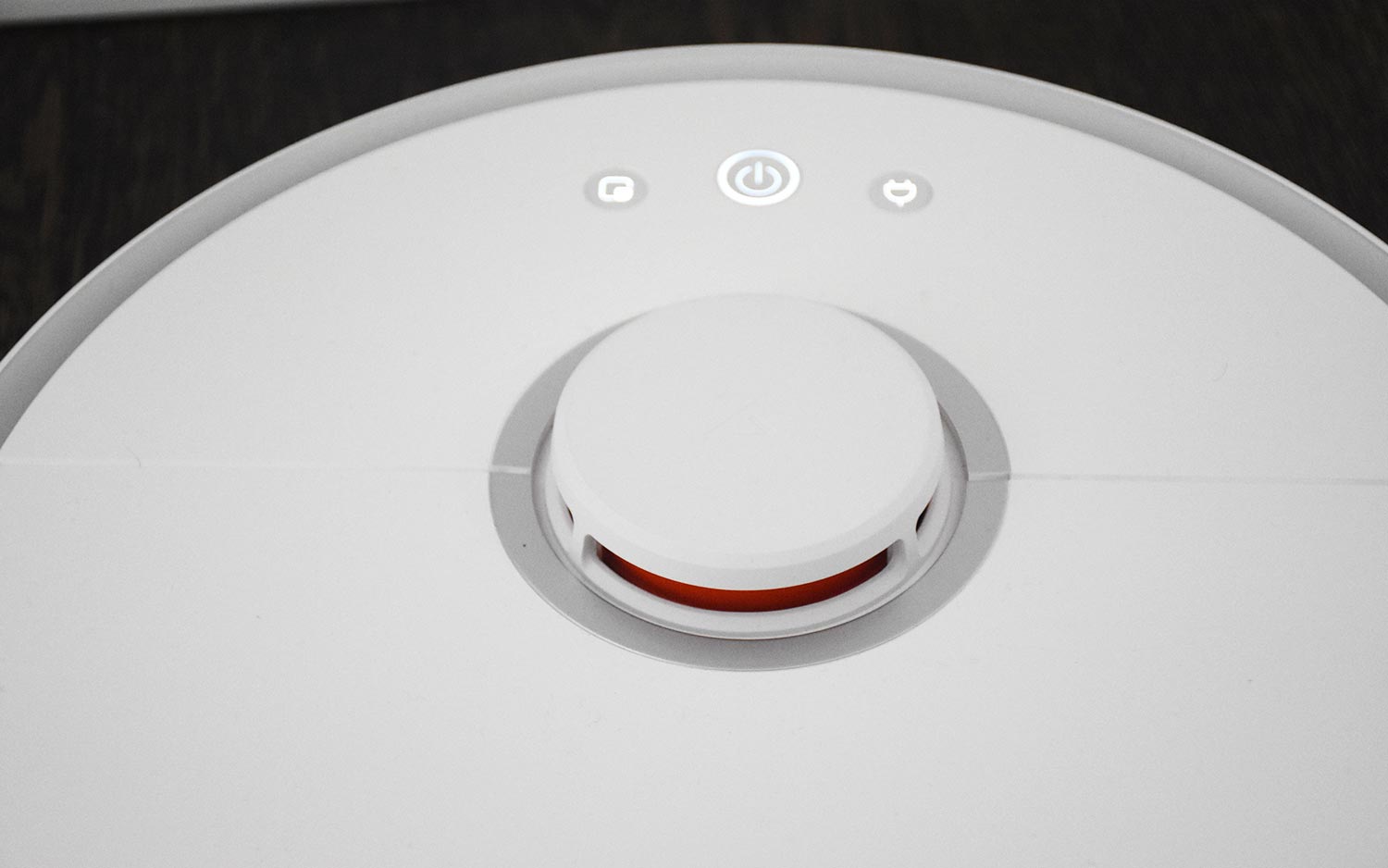
Despite its larger size, the Roborock S5 deftly maneuvered through tight spaces. At 3.8 inches high, the S5 sits squarely between the 3.9-inch Botvac D7 and the 3.7-inch Roomba 690. While we don’t love the raised laser cover in the center, the feature was less obtrusive than the one on the D7, which has a large overhang and penchant for getting stuck under living room chairs.
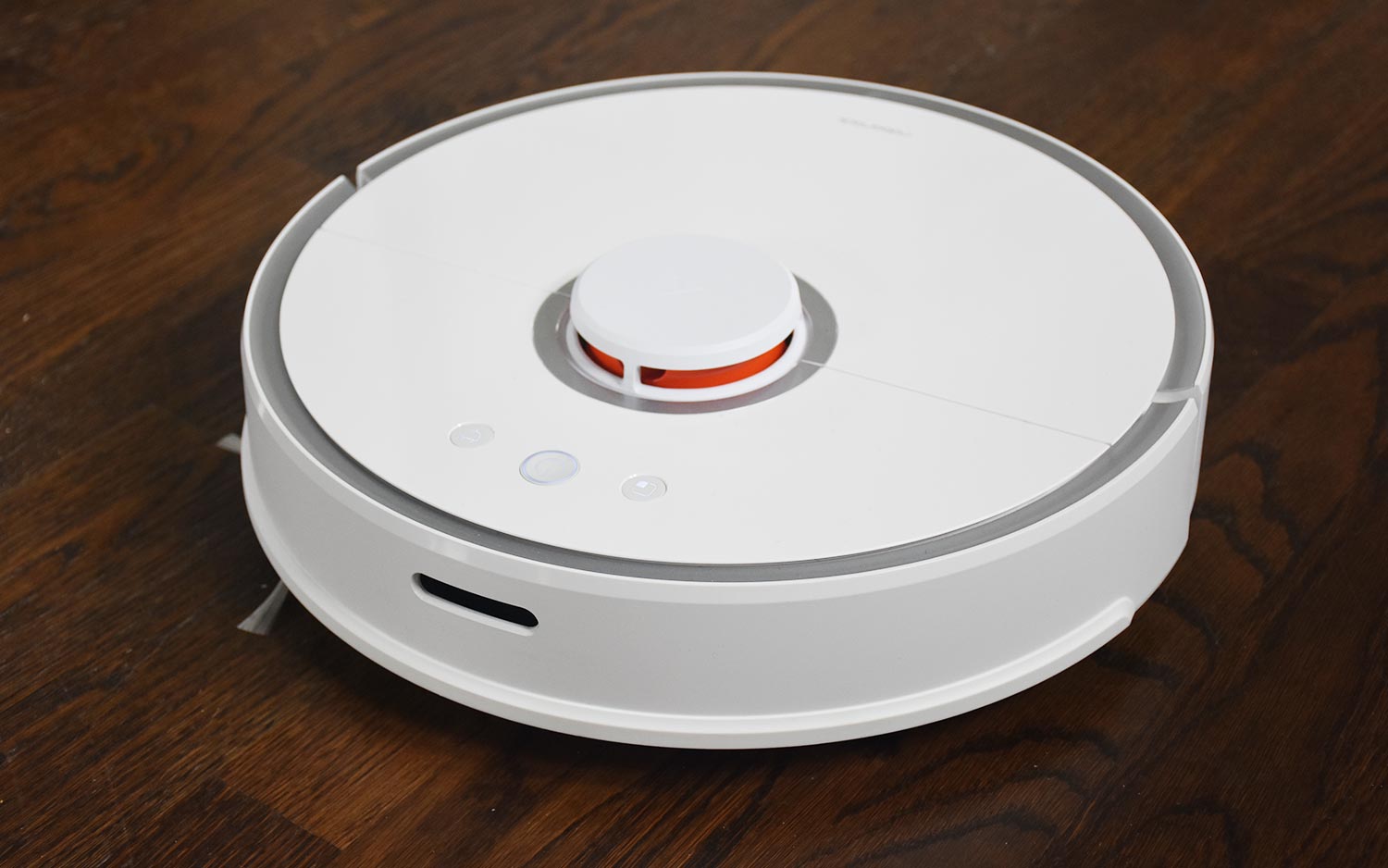
One of our favorite design elements of the Robovac S5 is its "hood." Flip up the thin plastic piece and you’ll find the ample dustbin hidden in the center, along with a Wi-Fi indicator light and system reset button. The S5 was the only robot vacuum we reviewed that had an onboard space to hold the otherwise easy-to-lose tool for cleaning the brush roll, a clever way to keep functionality while improving the overall aesthetic. An indented section near the rear is meant to hold the microfiber mop module.
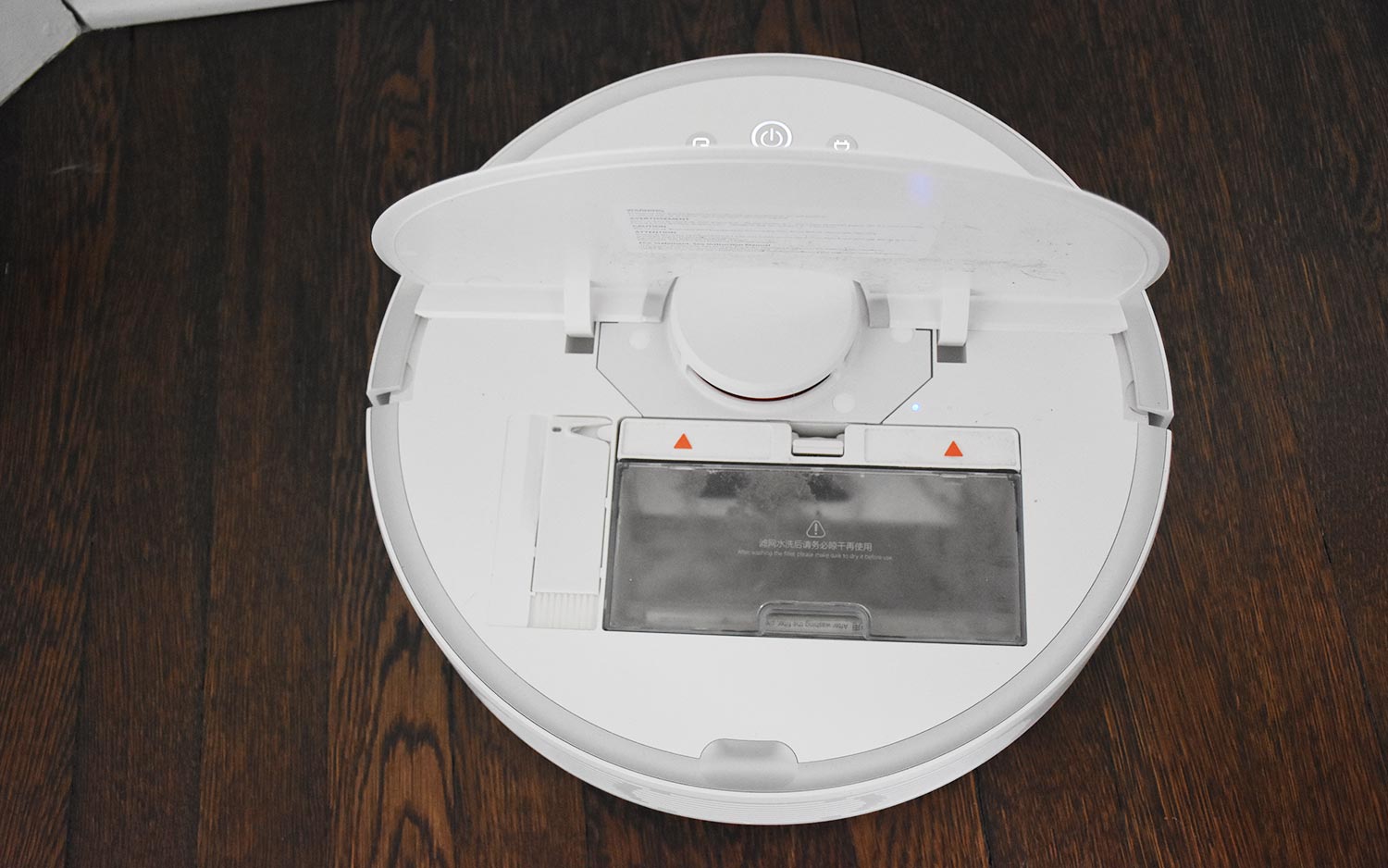
Flip the Roborock S5 over and you’ll find two black rubber wheels on either side, a multi-directional wheel in front, and a three-spoke side brush to the left. Between the black wheels is the combination rubber and bristle roller brush. Though similar to the brush on the Eufy Robovac 30c, the S5’s roller brush stayed remarkably free of hair and fuzz.
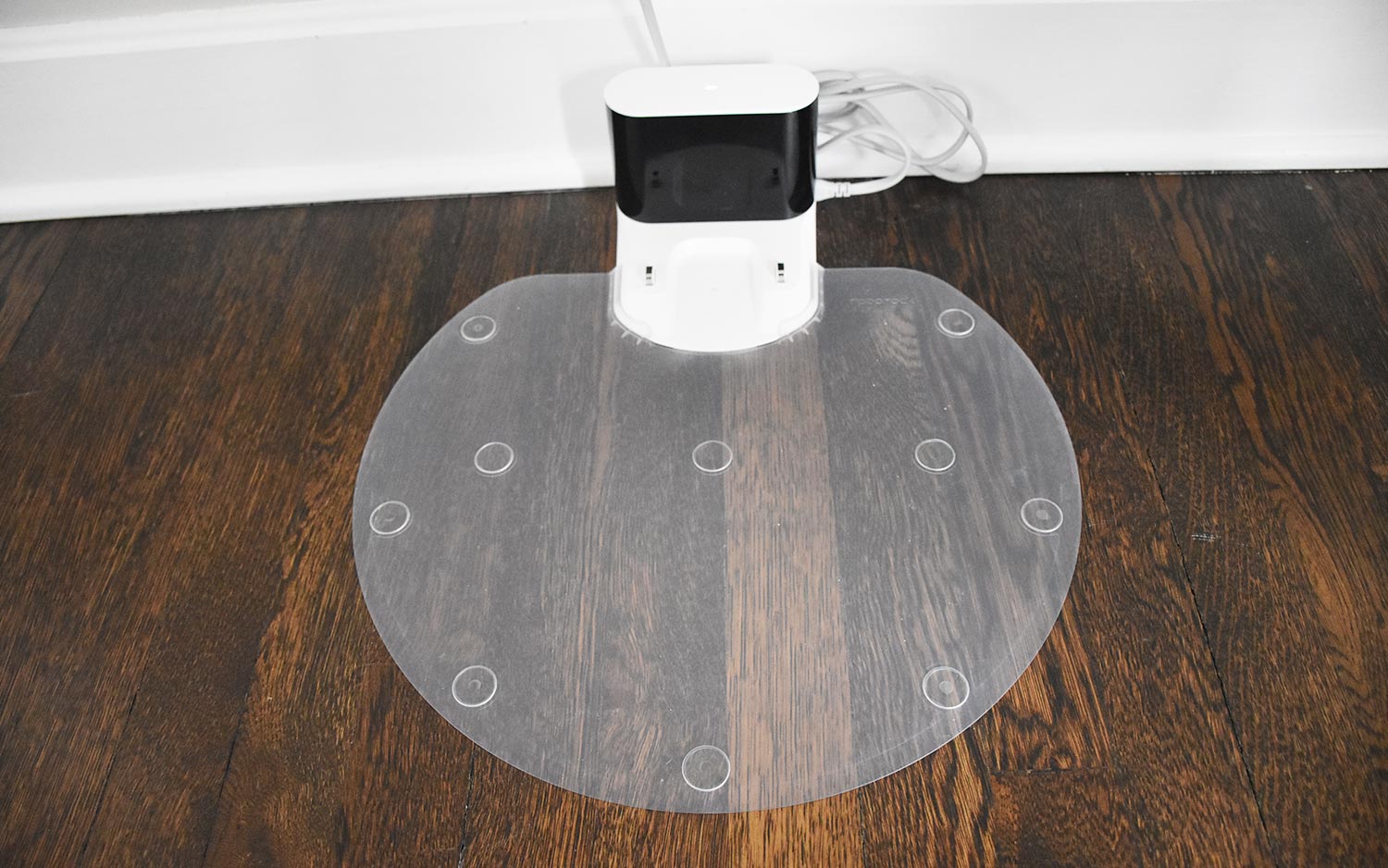
The black-and-white dock for the Roborock S5 is only slightly taller than the vacuum itself. A large, clear plastic mat attaches to the dock, but it’s only needed if you plan on using the mop attachment.
Setup and app
The Roborock S5 is primarily controlled via the Mi Home app (Android and iOS). Connecting the robot to the app and to our home wi-fi network took two tries, mostly because the directions for pairing the bot to the Wi-Fi network were not very clear. Abstruse instructions quickly became a recurring theme of the S5.
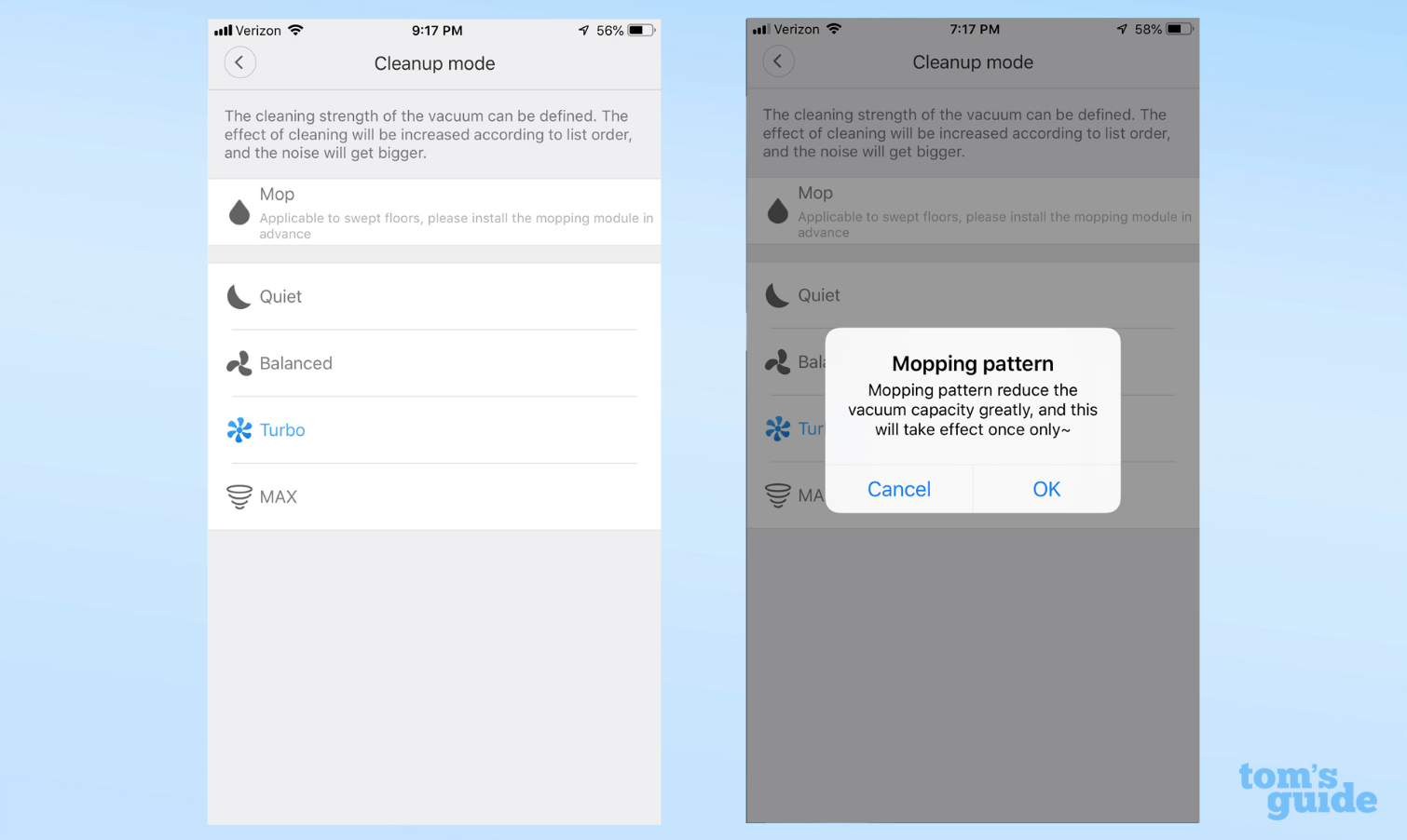
Much like the app that accompanies the Eufy Robovac 30C, the Mi Home app is designed to control multiple home smart devices. While the vacuum section of the app is robust, the layout isn’t intuitive.
The main screen displays the most recent map-cleaning area in meters, cleaning time and our favorite piece of information—remaining battery life. Along the bottom are icons for Go, Dock, Clean and Zoned Cleanup.
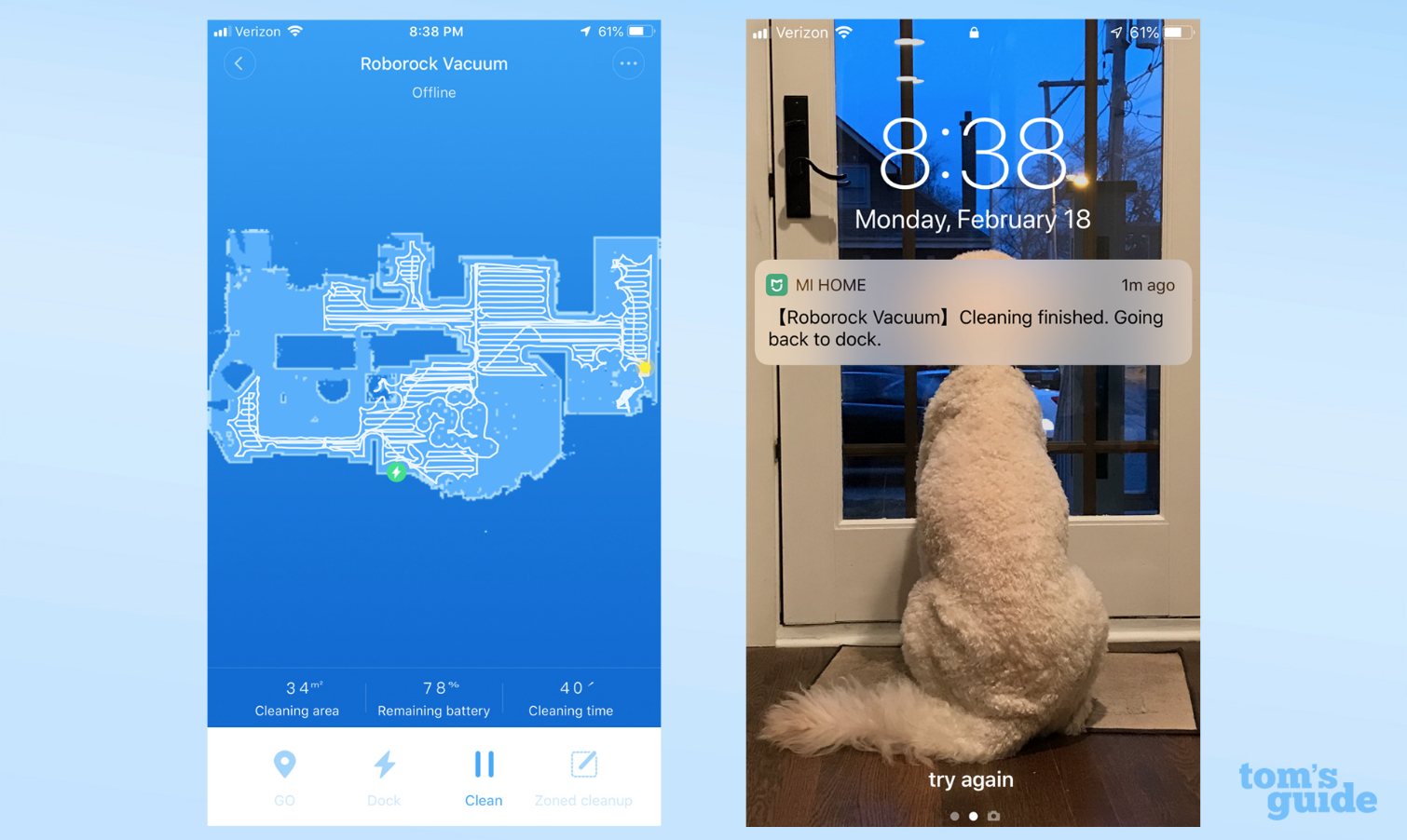
If you guessed that the Go icon would initiate a basic cleaning cycle, you would be wrong. Instead, Go directs the S5 to a user-chosen point on the cleaning map for the bot to perform a spot cleaning. Activating the Clean icon initiates a general vacuuming cycle. Buried in the Settings menu are five different Cleanup modes : Quiet, Balanced, Turbo, MAX and Mop. The app, and by extension, the vacuum, retains the mode last used.
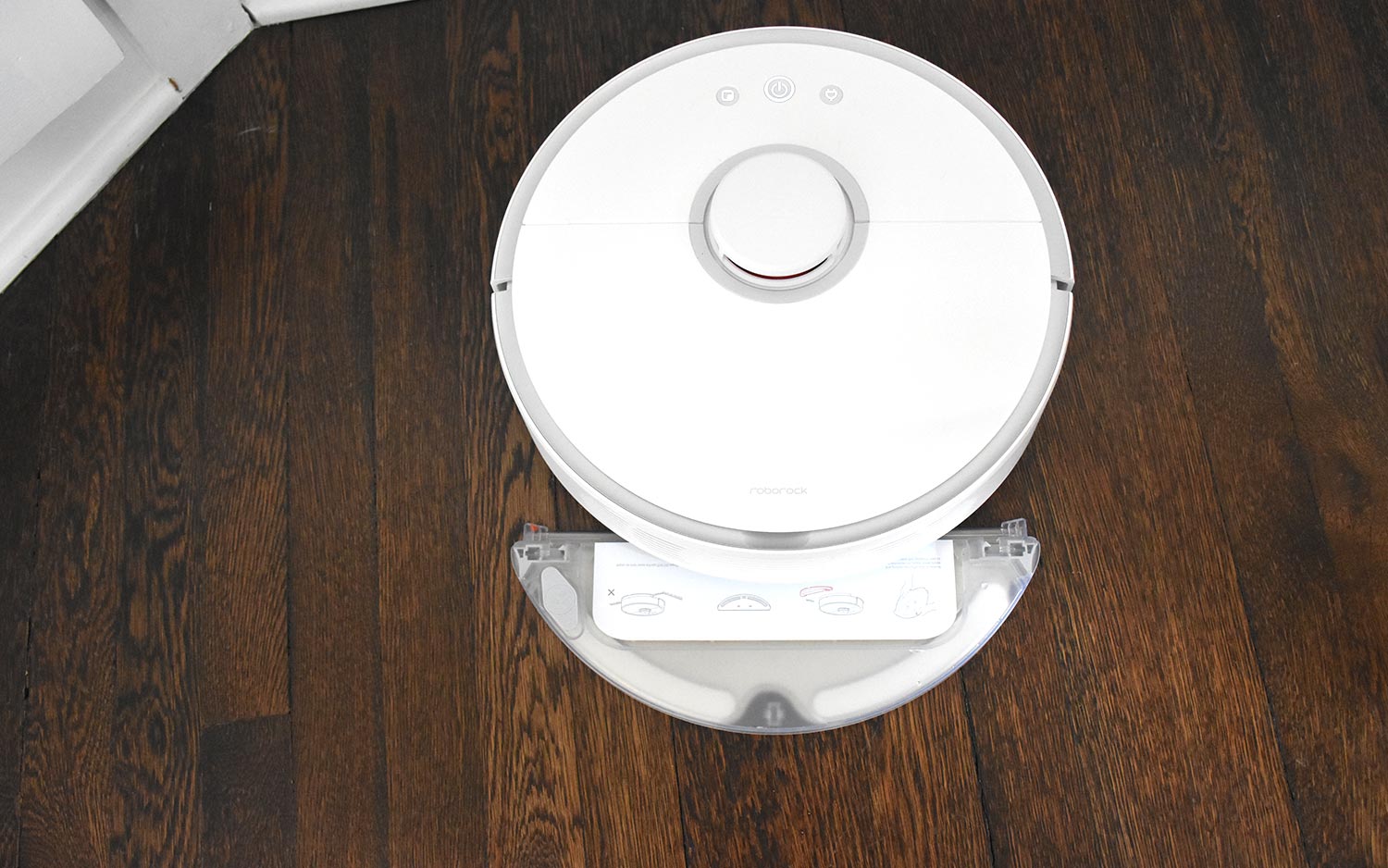
We were excited about zone cleaning on the Roborock S5, as it’s a great way to perform a daily cleaning of a front hall or kitchen where there’s more foot traffic. From the main screen on the app, you can draw boxes around the map areas you want vacuumed. Unlike the iRobot Roomba i7+ and the Neato Botvac D7, you cannot save or name the zones, which means you have to redraw the area every time you want to clean them. Adding to the confusion is an Edit Map button on the main screen that lets you draw virtual barrier tape and no-go zones.
MORE: Robot Vacuum Buying Guide: What You Need to Know
Note that Map Saving Mode is currently in beta and must be toggled on separately under Vacuum Settings in the app. We spent several test runs re-mapping our first floor due to the map not saving automatically. Both the more expensive iRobot Roomba i7+ and the Botvac D7 are able to store multiple floor plans.
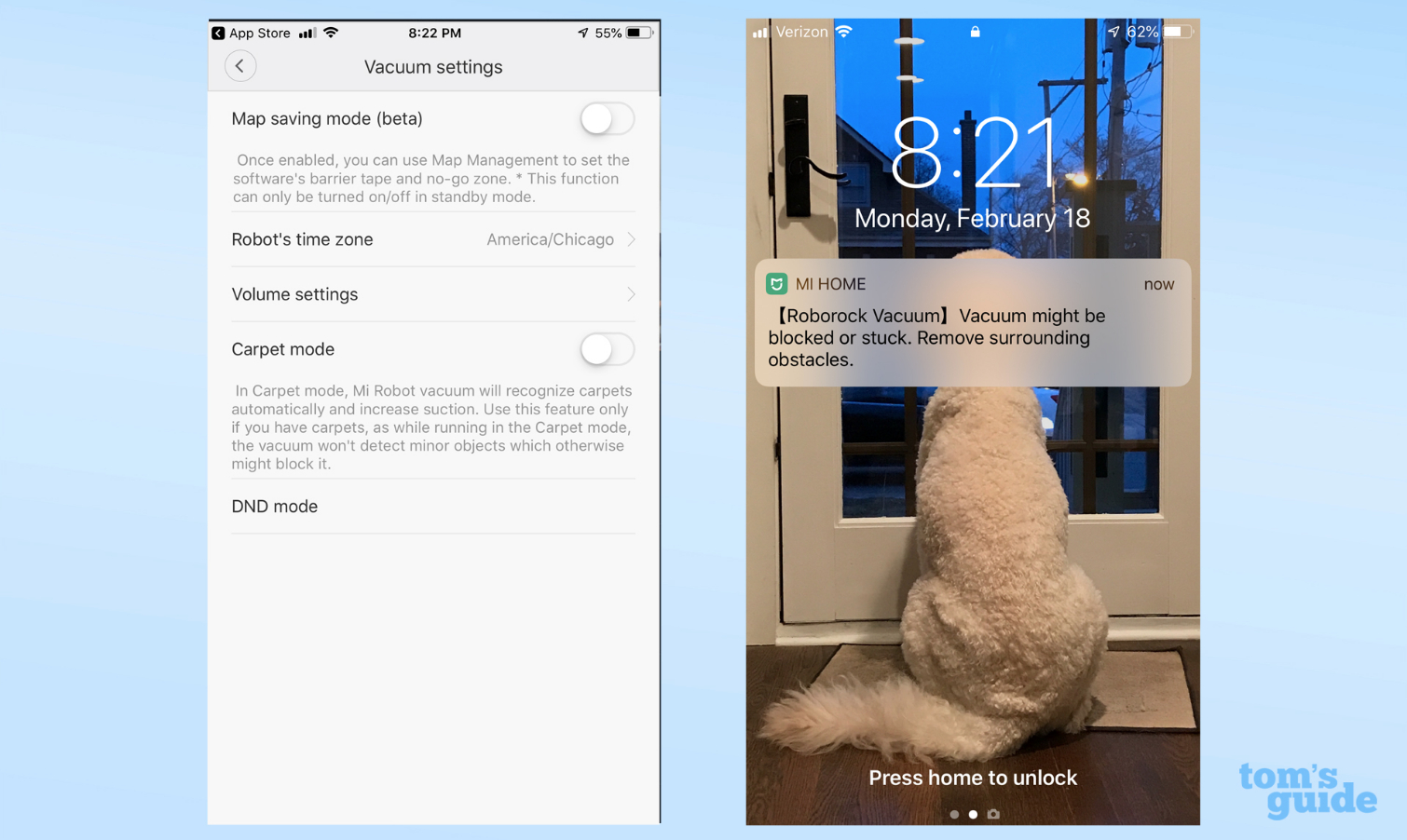
The Roborock S5 may also be controlled via Amazon Alexa and Google Home. However, don’t expect to access any advanced features using Alexa; the only options are On and Off, which prompts to bot to return to its base. Google Assistant adds "Return to Dock," which sends the robot home, as opposed to Stop, which pauses the vacuum in its tracks.
Cleaning performance
"Starting the cleanup," a cheery voice announces from deep inside the Roborock S5. Instead of a series of Morse code-like beeps and chimes employed by the Neato Botvac D7, the Shark Ion R85 and many other modern appliances, the S5 announces what it’s going to do in easy-to-understand language prompts.
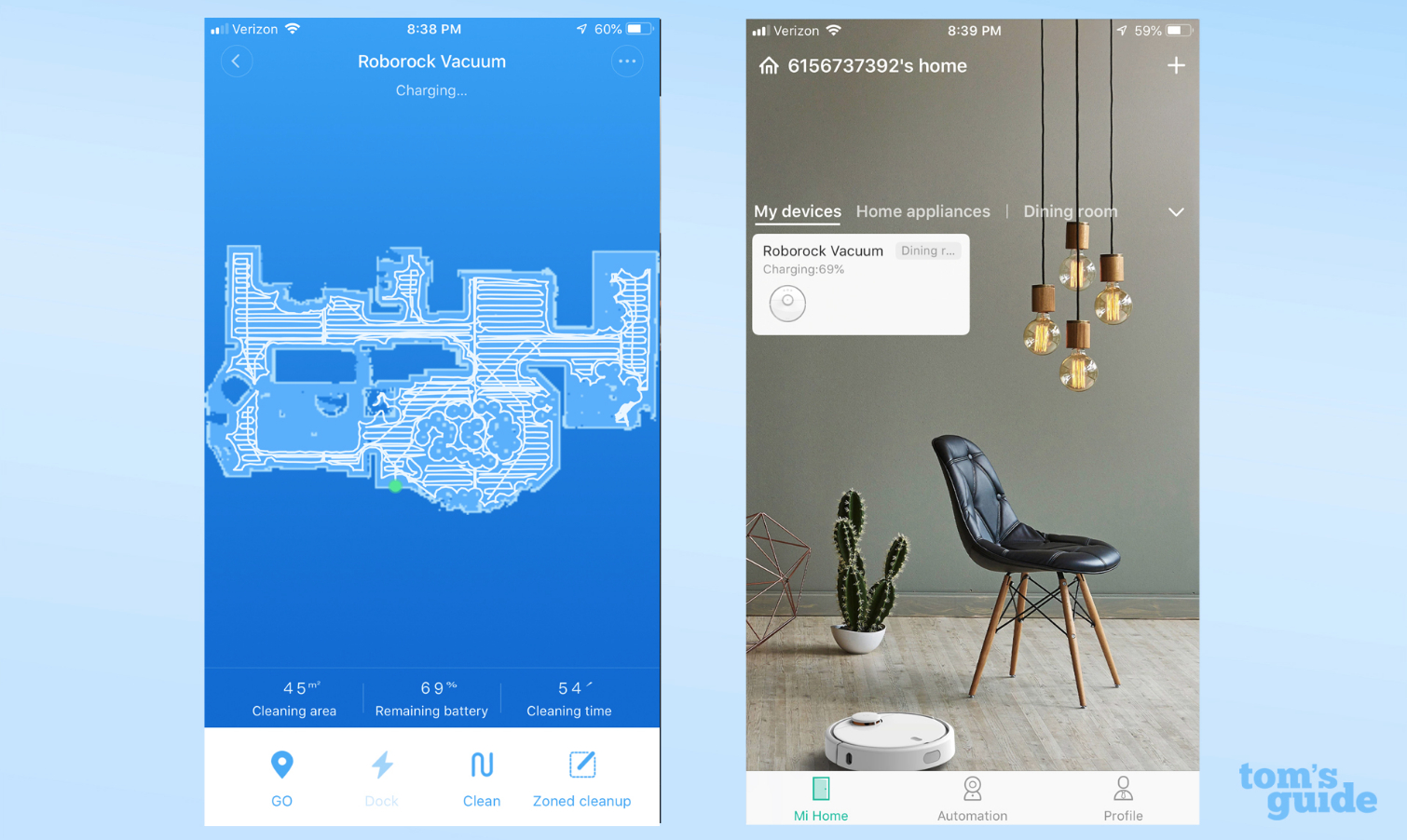
Once the Roborock S5 get its bearings, it cleaned areas in a thorough, precise, back-and-forth snake pattern. The robot vacuum quickly found its way through the maze under our dining room table, easily weaving its way from one side of the room to the other. We appreciated how tightly the S5 hewed to walls and around chair legs;it tackled walls and edges as tightly as the Neato Botvac D7. The vac was also smart enough to completely avoid a thick pile rug that felled other robot vacuums, but its taller height meant it didn’t fit under one of our chairs or our low-clearance couch.
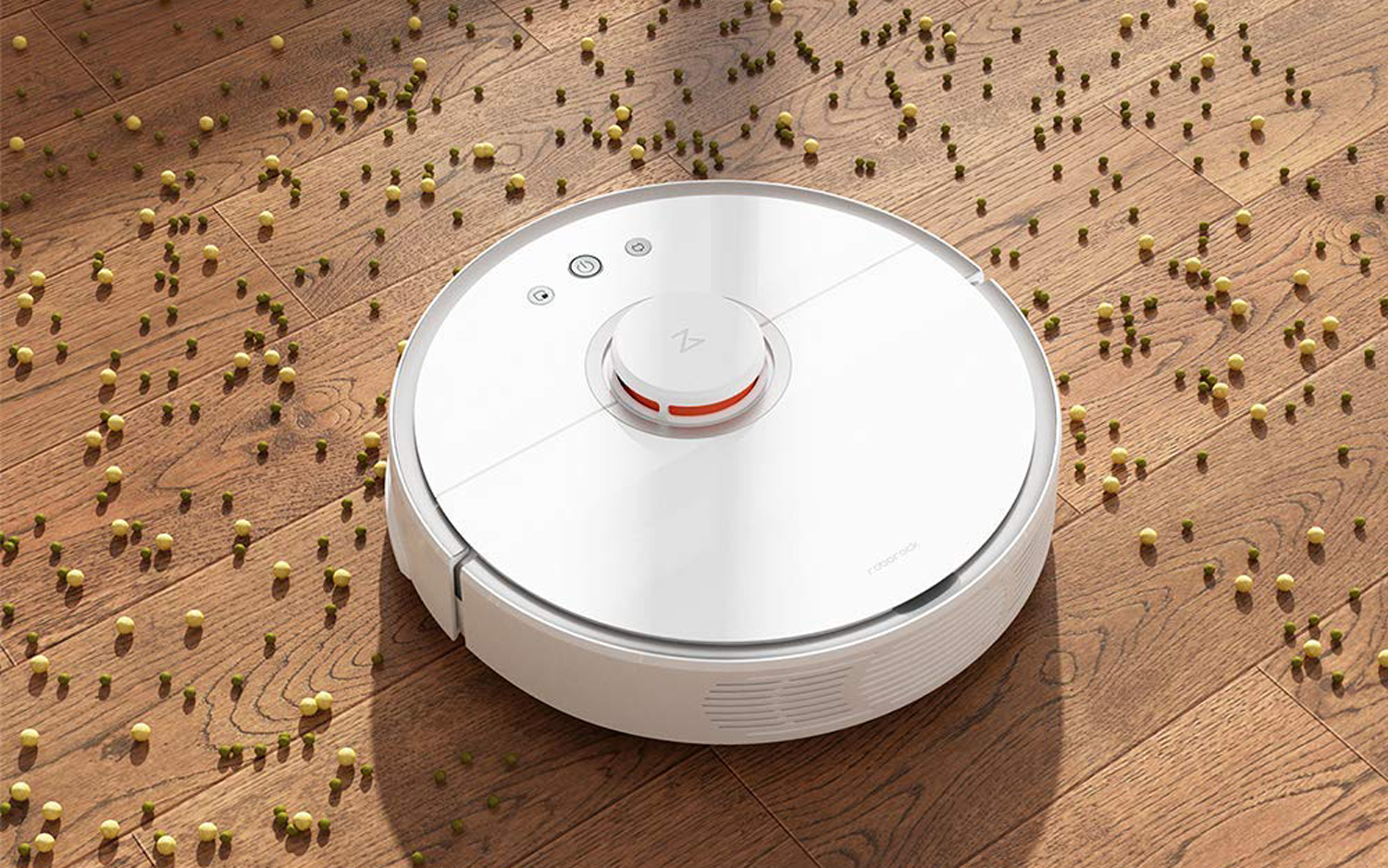
We were impressed with how gently the Roborock S5 approached walls and obstacles. The bumper on the Roomba 690 seemed to announce that it hit something with springy clunk; the S5 was much more polite. The robot slows its approach and its side brush before gingerly approaching an obstacle; however, once the S5 decided an object was approachable, it approached with gusto. The S5 pushed chairs and dog bowls around the floor more than the Shark Ion R85 and the Neato Botvac D7. It wasn’t destructive, but I wouldn’t leave a fragile vase on a lightweight plant stand around during a cleaning.
| Smartphone E- Control | Overall Cleaning Score | Average Cleaning Time | Cheerios Cleaning Score | Kitty Litter Cleaning Score | Pet Hair Cleaning Score | |
| Roborock S5 | Yes | 85.3 | 0:15:22 | 96.2 | 80.6 | 79.5 |
| Shark Ion R85 | Yes | 94 | 1:01:57 | 100 | 94 | 88 |
| Neato Botvac D7 | Yes | 91.3 | 0:10:22 | 99.8 | 85 | 89.3 |
| iRobot Roomba 690 | Yes | 89.2 | 1:12:27 | 99.5 | 94.9 | 73.3 |
In our lab tests, the Roborock S5 performed well, but not outstandingly so. On hardwood and carpet, it picked up an average of 96.2 percent of the Cheerios strewn across the test area, which was marginally less than the iRobot Roomba 690 (99.5 percent), the Neato Botvac D7 (99.8) and the Shark Ion R85, which scooped up a perfect 100 percent on this test.
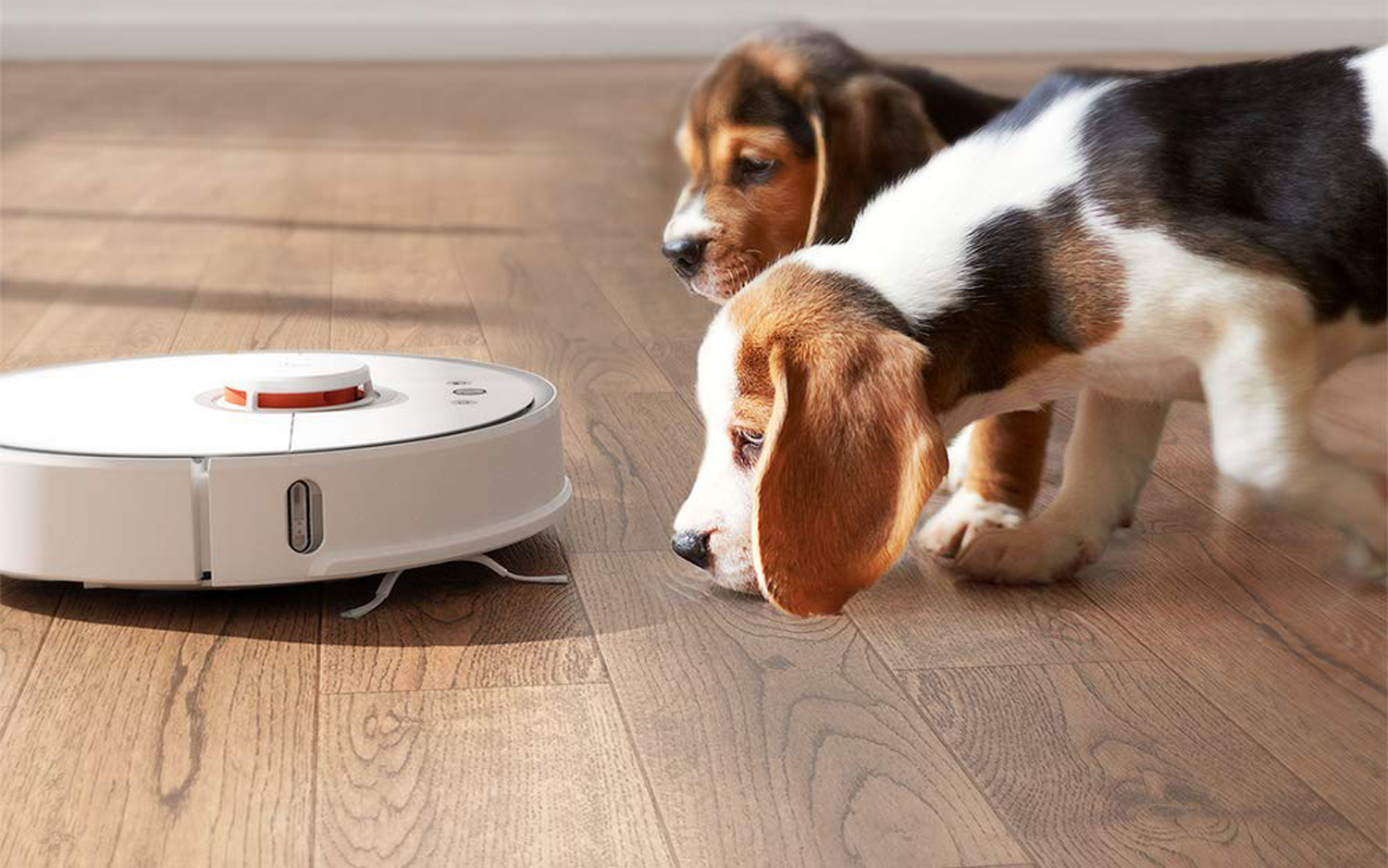
Picking up dog hair on both hardwood and carpet stymied many of the robot vacuums we tested, including the Roborock S5;it picked up just 79.5 percent of pet hair—10 percent less than the Botvac D7 and 8.5 percent less than the Ion R85. However, the S5 did best the Roomba 690’s 73.3 percent pet hair pickup rate.
MORE: Best Robot Vacuums
Overall, the Roborock S5 gathered an average of 86.8 percent of all test debris on carpet—a performance on a par with the Neato Botvac D7, but well below the Shark Ion R85’s 97.2 percent. The S5’s hardwood performance told a similar tale, picking up an average of 83.9 percent of all test debris. The Botvac D7 bested it by 12 percent.
What the Roborock S5 lacked in cleaning thoroughness, it made up for with speed, cleaning our hardwood and carpet test area in an average of 15 minutes and 22 seconds, almost a full hour faster than the Roomba 690 and 45 minutes fast than the Shark Ion R85. It wasn’t quite as fast as the Neato Botvac D7, which cleaned the test area in an average of 10 minutes, 22 seconds.
At 63.8 decibels, the Roborock S5 was noticeably louder than the Shark Ion R85 (59.2). We were able to have a conversation with another person in the room as the vacuum worked around us, but definitely raised our voices.
Mopping performance
The Roborock S5 distinguishes itself with a mopping feature that’s unique among the robot vacuums we tested, but unfortunately, its mopping prowess is more of a novelty than truly useful. A half-inch thin, half-moon-shaped disc with a microfiber pad attached with velcro clicks resides under the rear of the vacuum. Fill the disc with water, click it in, adjust the Cleanup mode in the app and you’re ready to clean.
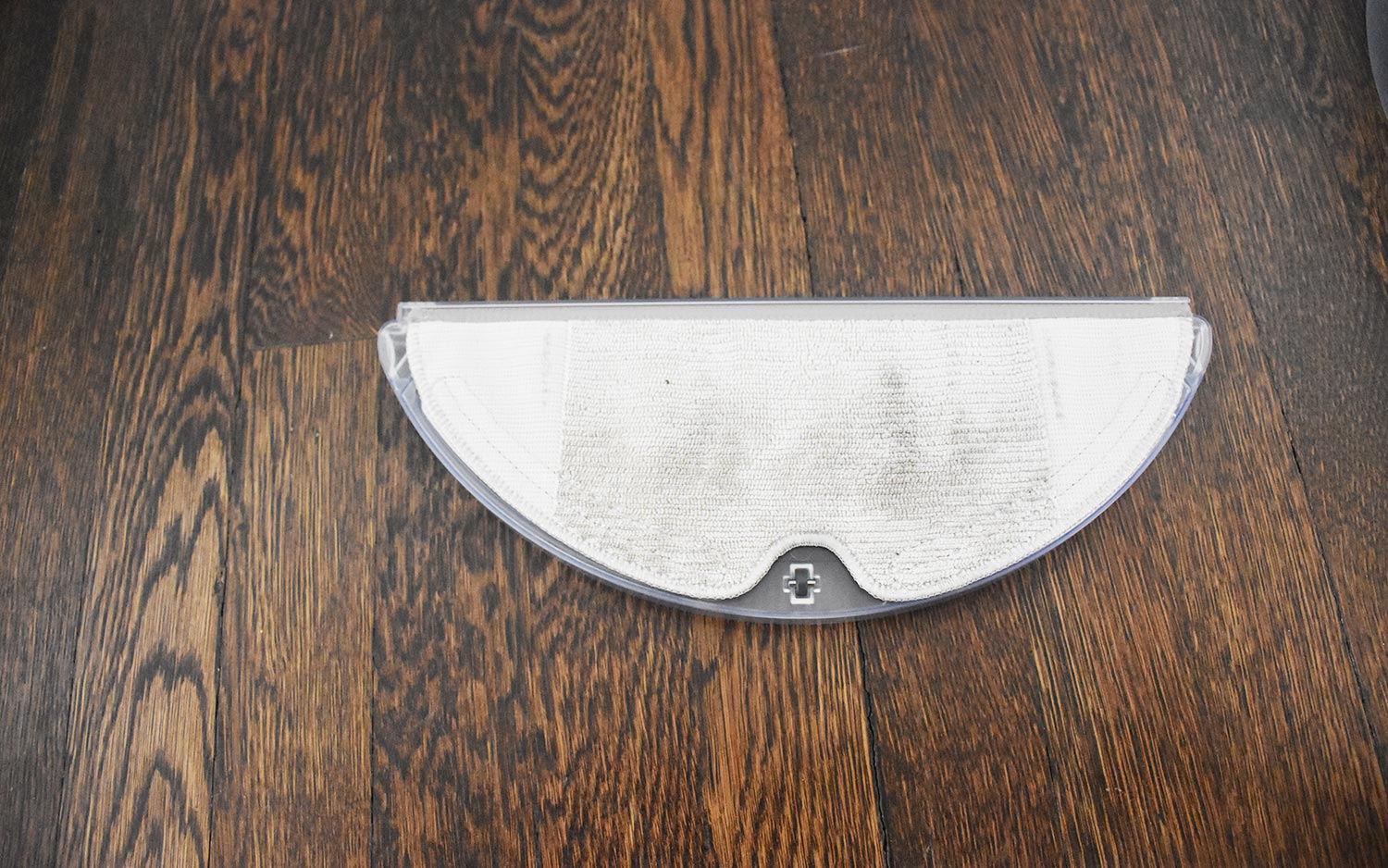
We were hesitant to give the S5 free reign to mop in case it decided to try and clean our rug, so we used the spot-cleaning mode, which cleans a 1.5- meter (4.9 feet) area around wherever the S5 is placed. Turns out our hesitations were unfounded. The Roborock S5 produced about as much water on the floor as a wet Swiffer pad. If only it had cleaned as well as a Swiffer does.
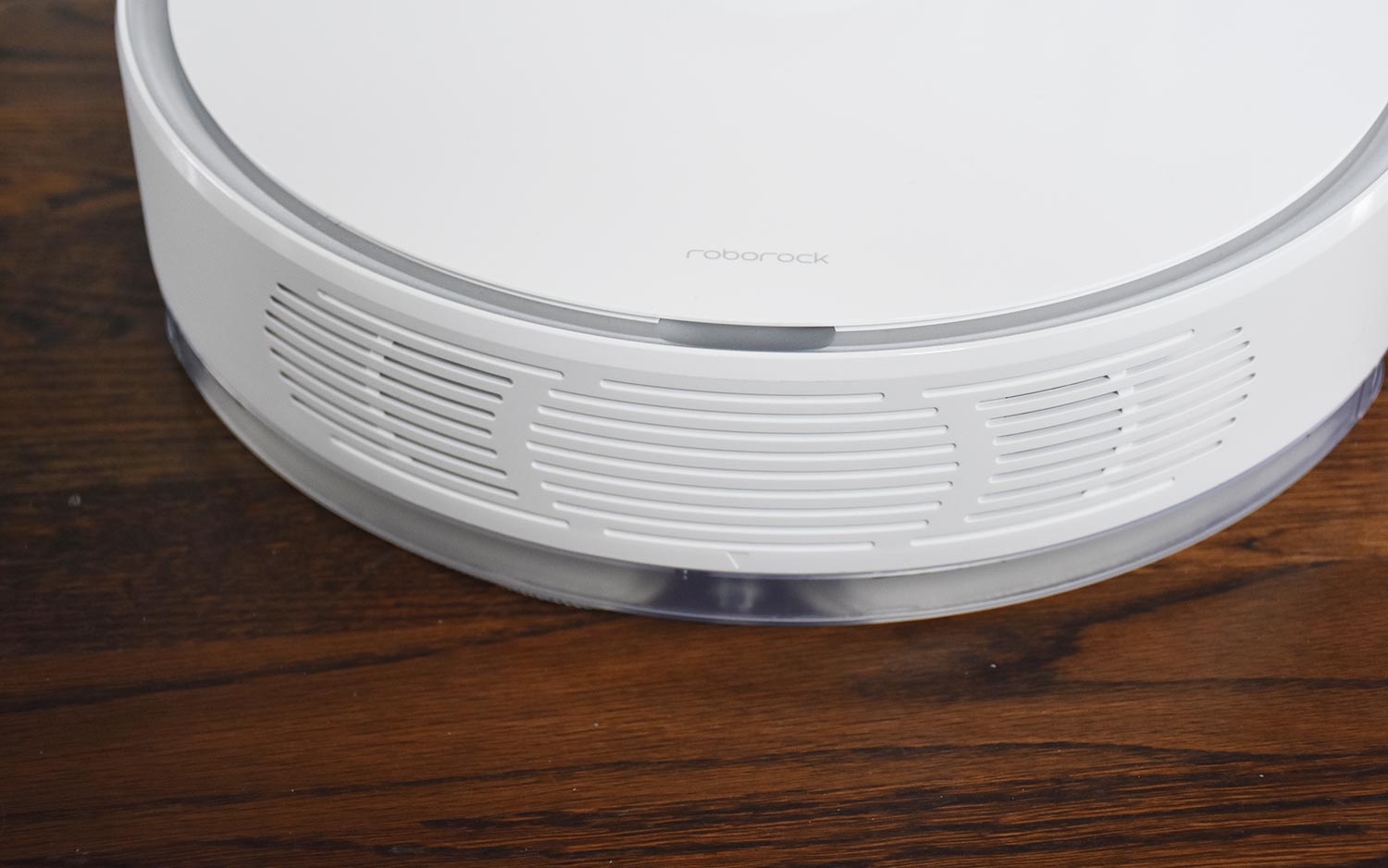
The manual recommends running a regular vacuum cycle over the area at least three times. We did this, but it didn’t seem to help. The S5 left the mopped area dull and a little tacky. If it was possible to use something in addition to water in the mop tank, perhaps it would have performed better.
Security concerns
The security firm AV-Test recently evaluated the security of four different app-connected robot vacuums, including the Roborock S55 and the iRobot Roomba 980. The Roborock S55 performed the worst; AV-Test said this was "Due partly to gross security deficiencies in data transmission, the transfer of data to third parties, the app's unexplainable thirst for data, as well as a clear need for improvement in the statement on the handling of customer data."
MORE: How to Secure Your (Easily Hackable) Smart Home
According to a Roborock representative, although the Roborock S5 uses the same app made by Xiaomi as the S55 (Xiaomi is an investor in Roborock), map data is stored locally on the robot, and only goes into the Cloud when a user views the map on the smartphone app. Up to 20 maps are stored in the Cloud at any given time, and are automatically deleted after a year. When users delete a map from the app, it’s also removed from the Cloud.
Bottom Line
While the Roborock S5 offers an attractive design, spoken messages and great edge navigation, it has a few shortcomings. While the vac was fast, it was only an okay cleaner and was outperformed by models which were much less expensive. We also wish it had a more user-friendly app. The mop attachment would do in a pinch, but its current iteration is not a must-have feature. If you don’t mind its longer run times and lack of a mop, the Shark Ion R85 is a much more thorough cleaner, easier to use and costs much less.
Credit: Tom's Guide
Meghan McDonough is a journalist who currently tests and writes about robot vacuums. Since 2008, she’s written about laptops, mobile phones, headphones, speakers, and other consumer tech. When she sees an unfamiliar device, Meghan has a habit of asking complete strangers, “What is that? Does it work well for you?” In her spare time, Meghan enjoys seeing live music, tending to her garden, and playing endless games of fetch with her Goldendoodle, Duke of Squirrel.

